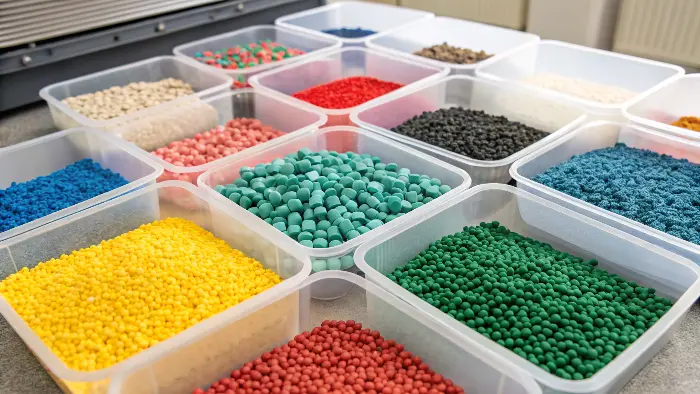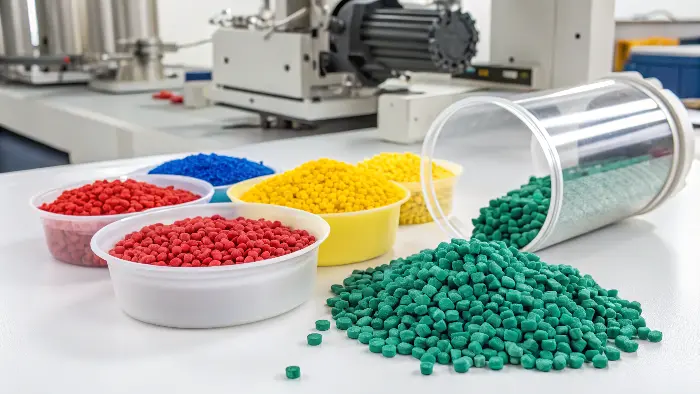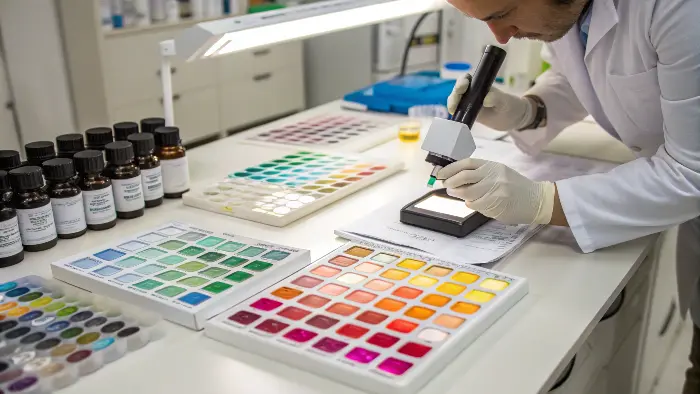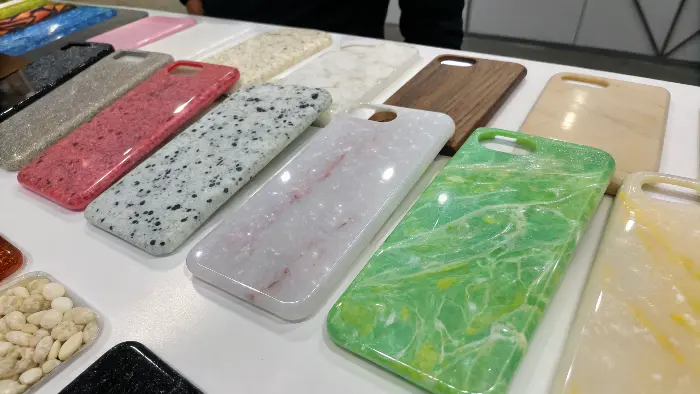Struggling with inconsistent product colors? Want vibrant, durable plastics easily? Masterbatches are your key, my friend. 😉
Color masterbatches are concentrated mixtures of pigments or dyes and additives dispersed in a polymer carrier. They’re added to base polymers during injection molding for precise coloration and sometimes to enhance other properties. It’s a neat solution!

Okay, so we’ve touched on what masterbatches are, but I bet you’re thinking, "There’s got to be more to it, right?" You’re absolutely correct! Let’s dive a bit deeper and really unpack this. I remember when I first started in this industry, gosh, probably over a decade ago now, the sheer variety and application of masterbatches seemed a bit overwhelming. But trust me, once you get the hang of it, it’s a game-changer for any molding project. So, let’s get into the nitty-gritty.
What Exactly Are Color Masterbatches Anyway?
Confused by all the plastic coloring terms flying around? Need a simple, no-fluff explanation for masterbatches? Let’s clear things up.
Color masterbatches are essentially pre-mixed, concentrated pellets of colorants (pigments or dyes) and often some helpful additives. These are blended with raw plastic resin to achieve the desired color and sometimes functional properties in the final molded part. Simple as that!

So, when we talk about color masterbatches, I want you to picture them as super-concentrated color boosters for plastics. Instead of dealing with messy powders or tricky liquid colorants, we get these neat little pellets. Think of it like this: if you’re baking a cake and want it red, you wouldn’t just throw in a handful of red powder, would you? You’d probably use a concentrated food coloring gel for an even, vibrant color. Masterbatches are kind of the industrial equivalent for plastics – much more precise and way less messy!
They’re made by taking pigments or dyes – the actual color-giving stuff – and mixing them really, really well with a carrier resin. This carrier is usually a polymer that’s super compatible with the main plastic you’re going to mold. Often, they also include some additives to help everything mix nicely and to give the final product some extra oomph, like UV protection or anti-static properties. The real beauty of this is that it ensures the color is spread out evenly, so you don’t get weird streaks or blotches in your finished products. It’s a much cleaner and more precise way to color plastics, and honestly, it makes my life as a project manager a lot easier when I know the color consistency will be spot on. No more crossing my fingers and hoping for the best! 😂
How Many Types of Color Masterbatches Are Out There?
Feeling a bit swamped by all the masterbatch options? Not sure which type fits your specific needs? Let’s explore the varieties together.
Masterbatches are categorized in several ways: by color (like white, black, or specific hues), by application (e.g., injection molding, blow molding), by carrier resin (PE, PP, PS), and by function (like UV stabilizers or antistatics). Special effect types also exist for unique finishes.

You know, it’s pretty amazing how many different types of masterbatches we can actually get our hands on. It’s not just about picking a red or a blue, oh no. I’ve learned that the classification can get quite specific, which is super helpful for us in the field when we’re trying to nail a project.
First off, we’ve got them sorted by color. The big players here are white masterbatches, usually using titanium dioxide (TiO2) for that crisp, opaque white, and black masterbatches, which typically use carbon black for deep, rich blacks. Then, of course, there’s a whole rainbow of other colors – reds, blues, greens, yellows, you name it. Custom color matching is also a huge part of what we do at CAVITYMOLD.
Then, they’re often grouped by application. For instance, we frequently use injection molding masterbatches, but there are also types specifically formulated for blow molding (think bottles and hollow parts), film extrusion, or even for spinning fibers for textiles. Each process has its own demands, you see.
Another key way to categorize them is by the carrier resin. This is super important because the masterbatch carrier needs to be compatible – like best friends! – with the main plastic you’re using. If they don’t get along, you’ll have a mess. So, you’ll see PE masterbatches for polyethylene, PP for polypropylene, PS for polystyrene, and so on for PET, ABS, PC, and even those fancy engineering plastics.
And let’s not forget functional masterbatches! These are the real heroes sometimes, adding things like UV protection (so your outdoor products don’t fade or become brittle), anti-static properties (goodbye dust!), or even flame retardancy. It’s like getting a color and a superpower all in one pellet! 💪
Here’s a quick table to make it a bit clearer:
| Category | Examples | Why it Matters? |
|---|---|---|
| By Color | White (TiO2), Black (Carbon Black), Custom | Basic aesthetic requirement, branding. |
| By Application | Injection Molding, Blow Molding, Film, Fiber | Process-specific formulation for best results. |
| By Carrier Resin | PE, PP, PS, PET, ABS, PC, Nylon | Ensures compatibility and good dispersion. |
| By Function | UV Stabilizer, Antistatic, Flame Retardant | Adds value beyond just color, enhances performance. |
| By Special Effect | Pearlescent, Metallic, Fluorescent, Marble | Creates unique visual appeal, differentiation. |
It might seem like a lot, but honestly, once you get the hang of what you’re looking for, it’s not so scary. I remember this one project where we needed a specific shade of blue for a consumer electronic casing, but it also had to be UV resistant because it would be near a window. Picking the right functional color masterbatch saved us – and the client – a lot of headaches down the line!
Where Do We Actually Use These Color Masterbatches in Injection Molding?
Wondering where these colorful little pellets fit into the grand scheme of things? Curious about their real-world impact? Let’s see their applications.
Color masterbatches are vital across a huge range of industries: consumer goods (toys, appliances), automotive (interiors, exteriors), medical devices, electronics (casings), packaging (food, cosmetics), and construction (pipes, frames). Basically, if it’s colored plastic, masterbatch was probably involved!

So, where do these colorful little pellets actually end up? Well, pretty much everywhere plastic is used and needs some color! It’s kind of cool when you stop and think about it. I’ve worked on projects for so many different sectors here at CAVITYMOLD, and masterbatches are almost always part of the conversation. It’s a fundamental ingredient.
In consumer goods, think about all those vibrant toys your kids play with, the sleek casing of your kitchen appliances, or even the buttons on your remote control. That consistent, appealing color often comes from a masterbatch. It has to be safe, durable, and look good, right?
The automotive industry is another massive user. From interior dashboards, door handles, and seatbelt components to exterior trim pieces and light housings, masterbatches help achieve those sleek, consistent colors and finishes that car manufacturers demand. I recall a project for an automotive client where the exact shade of grey for an interior component was absolutely critical for the overall luxury feel – masterbatch precision was non-negotiable. Plus, these parts often need to withstand tough conditions like UV exposure and temperature swings.
Then there’s packaging. Those eye-catching shampoo bottles, colorful food containers, and elegant cosmetic tubes? Yep, masterbatches are working their magic there to make products stand out on the shelves and reinforce brand identity. Food-grade compliance is often a big deal here too.
Even in medical devices, specific colors can be crucial for identification (e.g., color-coding for different sizes or types of devices), and masterbatches provide that reliability and consistency, along with necessary biocompatibility in many cases. And let’s not forget electronics – phone cases, laptop bodies, smart home devices, all that jazz. The color and finish are key parts of the product design.
It’s really about bringing products to life with color and sometimes, as we discussed, added functionality. It’s a small component in the grand scheme of things, but the impact is massive. It’s one of those unsung heroes of manufacturing!
How Do I Pick the Right Color Masterbatch for My Project?
Choosing masterbatches feel like a bit of a gamble sometimes? Want to make sure you get that perfect color and performance every time? Let’s get selective.
Select masterbatches based on base polymer compatibility, required color accuracy and fastness, processing conditions (temperature, shear), end-product application (e.g., food contact, UV exposure), and, of course, regulatory compliance. It’s a checklist!

Alright, this is where the rubber meets the road, or rather, the masterbatch meets the resin! Picking the right one is super, super important, and it’s not just about finding the prettiest color on the shelf. I’ve learned a few key things to consider over my years in product and mold design, and trust me, getting this right upfront saves a world of pain later.
First and foremost, polymer compatibility. I can’t stress this enough. The carrier resin in the masterbatch must be compatible with the base polymer you’re molding. If they don’t play nice, you’ll get poor dispersion (streaks or clumps of color), weak spots in your part, or a terrible surface finish. It’s like trying to mix oil and water – just doesn’t work well, and the result is usually a reject bin full of parts. 😬
Next up is color accuracy and consistency. You need to define your color target clearly. Will it be a standard color (like a RAL or Pantone), or do you need a custom match to a physical sample? How critical is the exact shade? Also, think about lightfastness (will the color fade under light?) and heat stability (will the color change during processing or when the product is in use at high temperatures?).
Then, consider your processing conditions. Different masterbatches behave differently under various temperatures and shear rates in the injection molding machine. You need one that disperses well within your specific machine setup and cycle times without degrading the pigment or the polymer.
The end-product application is also a big one. Is it a food container? Then you’ll absolutely need food-grade masterbatches that comply with regulations like FDA or EU standards. Will it be used outdoors? Then UV stability is a must to prevent fading and degradation. Is it a kid’s toy? Safety regulations (like EN71) come into play regarding heavy metals and other restricted substances.
Finally, don’t forget cost and supplier reliability. You want a good quality masterbatch that fits your budget, from a supplier like us at CAVITYMOLD who you can trust to deliver consistently, batch after batch. It’s a balancing act, but getting it right means a smooth production run and a happy client. I always tell my team, "Measure twice, cut once," and with masterbatches, it’s "Test thoroughly, then mold with confidence!"
Here’s a little checklist I mentally run through for every new project:
- Base Polymer: What am I molding with? (e.g., PP, ABS, PC, TPE?)
- Color Target: Exact shade? RAL, Pantone, custom match? What’s the acceptable tolerance (Delta E)?
- Performance Needs: UV resistance? Heat stability? Food contact approval? Chemical resistance?
- Processing Method: Standard injection molding? High-speed? Thin wall? Hot runners?
- Regulatory Needs: RoHS, FDA, REACH, Prop 65?
- Let-Down Ratio (LDR): What’s the recommended percentage of masterbatch to use?
- Budget: What’s the cost target per part for coloration?
Phew! That’s quite a list, right? But trust me, going through these points systematically saves a ton of headaches and costly mistakes later. It’s all part of mastering molding right!
What Are Some Special Effects I Can Get with Masterbatches?
Tired of plain, flat colors in your plastic products? Want your designs to truly pop and grab attention? Then you need to explore special effect masterbatches! ✨
Special effect masterbatches offer unique visual aesthetics like pearlescent sheens, metallic finishes, fluorescent glows, phosphorescent (glow-in-the-dark) effects, and even sophisticated marble or granite-like patterns. They add that ‘wow’ factor!

Now, this is where things get really fun and creative! Beyond just solid colors, masterbatches can create some seriously cool and sophisticated visual effects. I’ve seen some amazing products come to life thanks to these special types. It’s not just about coloring plastic anymore; it’s about giving it character, depth, and a premium feel. This is where design intent really shines.
For example, pearlescent masterbatches can give products a beautiful, shimmering, mother-of-pearl look. Think high-end cosmetic packaging, luxurious automotive interior trims, or even stylish consumer electronics. The way the light plays off these surfaces is just gorgeous.
Then you have metallic masterbatches, which mimic the appearance of metals like aluminum, silver, gold, or even brushed steel. These are awesome for making plastic parts look more luxurious, robust, or industrial, depending on the application. I remember a project for a premium coffee machine where a metallic finish on certain plastic components made it look incredibly sleek and modern, almost indistinguishable from actual metal at first glance.
Fluorescent masterbatches are fantastic for high-visibility items – safety equipment, sports gear, toys, or promotional products that need to grab attention instantly. They absorb UV light and emit it as a vibrant, almost neon, glowing color in daylight. Super eye-catching!
And who doesn’t love glow-in-the-dark stuff? That’s achieved with phosphorescent masterbatches. They "charge up" under ambient light and then slowly release that energy as a visible glow when the lights go out. Perfect for emergency signage, kids’ toys, watch dials, or just cool novelties. I’ve even seen them used in some architectural applications.
There are even masterbatches that can create marble, granite, or wood-grain effects. It’s pretty incredible how they can transform a simple piece of plastic into something that looks like a natural material. These are great for decorative items, furniture components, or appliance panels. We’ve also seen thermochromic masterbatches that change color with temperature, and photochromic ones that change with light exposure. The possibilities are really expanding all the time! It’s always exciting when a client comes to us at CAVITYMOLD wanting to explore these options because it means we get to push the boundaries of what plastic can look like.
Conclusion
Masterbatches are truly vital for coloring and enhancing plastics. Understanding their types, applications, and selection criteria helps achieve desired product aesthetics and functionality. Master them, and you master your molding!
